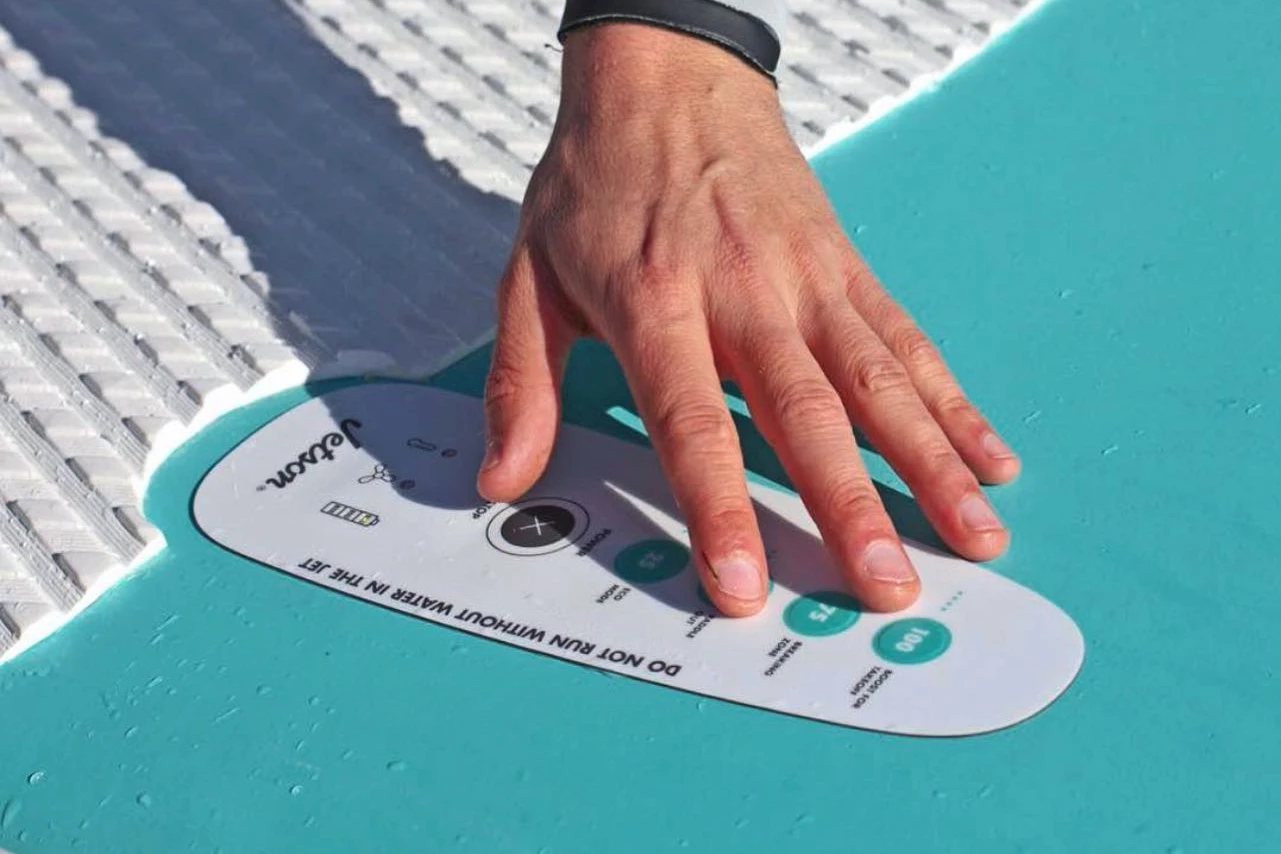There are now quite a few electric surfboards on the market, and they almost all work in the same way – their jet drive runs for as long as you squeeze a throttle on a handheld remote. The Jetson is different, in that it provides temporary boosts as needed.
Manufactured by Florida-based startup Jetson Surf Technology, the board is currently the subject of an Indiegogo campaign.
As far as its conventional features go, the Jetson sports four removable fins, epoxy resin construction, and is being offered in three lengths catering to individual users' body size, skill level and surfing style. The choices are 6 ft/8 in, 8 feet and 9 feet (2, 2.4 and 2.7 m), which reportedly tip the scales at 19, 21 and 23 lb (8.6, 9.5 and 10.4 kg), respectively.
But yes, it also has a built-in jet drive motor that delivers up to 20 lb (9 kg) of thrust.

That motor is activated by a waterproof deck-integrated touchpad, on which users can choose between four speed/power modes. These range from 25% output, in which it reaches a speed of 2 mph (3 km/h), up to 100% with a top speed of 6 mph (10 km/h). The idea is that lower speeds can be used to assist riders as they paddle out or maintain their waiting position in heavy currents, while higher speeds can help them punch through and catch waves.
Jetson founder Gary Lane tells us that when the 100% mode is activated, the motor will run at that output for 12 seconds, drop to 75% for another 100 seconds, then automatically shut off – it can also be manually shut off earlier. Both 25% and 50% shut off after 100 seconds. This means that the motor won't stay running once the assistance is no longer needed – saving battery life – but it also means that if longer runtimes are required, riders will have to tap the touchpad again … perhaps a bit awkward, if they're standing at the time.

One charge of the lithium battery pack is claimed to be good for up to 90 minutes of runtime.
But of course the big question is, "What happens if you fall off while the motor is still running?". Lane says that the board is designed in such a way that when no one is on it, it floats with the jet drive nozzle sitting above the water's surface – so in other words, it won't continue on without its rider. Additionally, as is the case with traditional surfboards, the rider is connected to it by an ankle leash.
Assuming the Jetson board reaches production, a pledge of US$5,395 will get you one – the planned retail price is $8,995. It's demonstrated in the video below.
Sources: Indiegogo, Jetson Surf Technology





